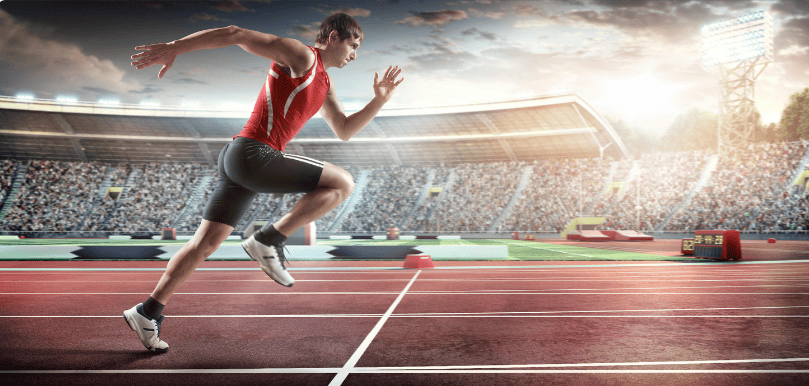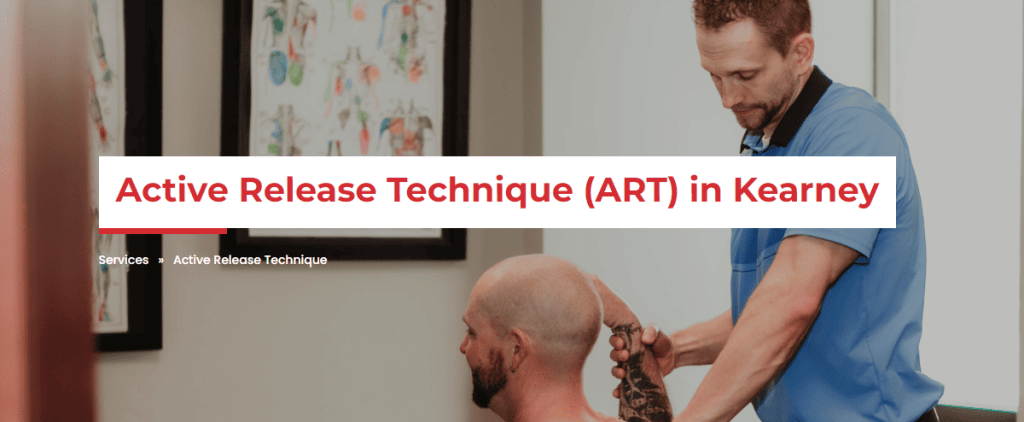In the dynamic world of sports, injuries are an ever-present adversary, confronting athletes at every level with the need for effective rehabilitation. Whether you’re a seasoned professional or an enthusiastic weekend warrior, the rigors of sports can leave their mark in the form of strains, sprains, and other musculoskeletal challenges. Fortunately, there is a potent tool in the realm of sports injury rehabilitation known as Active Release Therapy (ART). In this comprehensive guide, we delve into how ART is harnessed by athletes at various levels to recover from injuries and elevate their performance while strictly adhering to Google’s E-A-T (Expertise, Authoritativeness, Trustworthiness) guidelines.

Understanding Active Release Therapy (ART)
Before delving into its benefits and applications, let’s establish a solid understanding of what Active Release Therapy (ART) entails and how it functions. ART is a hands-on, manual therapy technique meticulously crafted to address soft tissue injuries and rectify muscle imbalances. This modality, honed over more than three decades, has garnered significant recognition for its efficacy in treating a diverse array of conditions, ranging from overuse injuries to acute muscle strains.
Skilled ART practitioners, often referred to as ART specialists or therapists, employ their hands to assess the texture, tightness, and mobility of muscles, tendons, ligaments, and fascia. This palpation enables them to identify areas afflicted by adhesions and scar tissue, which are subsequently targeted for release. The outcome is a reduction in tension, pain alleviation, and an improvement in the range of motion. This precision in addressing soft tissue issues sets ART apart from conventional methods of rehabilitation, making it an exceptional choice for athletes and non-athletes alike.
How ART Benefits Professional Athletes
The demands placed on professional athletes necessitate not only peak performance but also rapid recovery from injuries. For these elite individuals, ART has become an indispensable tool in their arsenal. Athletes from a myriad of sports disciplines, including football, baseball, and track and field, have enthusiastically embraced ART as a means of enhancing performance and expediting injury recovery.
ART offers a swifter path to injury rehabilitation, permitting athletes to return to the field or court in a shorter time frame compared to traditional rehabilitation methods. More importantly, it zeroes in on the root causes of pain and dysfunction, contributing to not only faster recovery but also enduring relief. The technique, notably, aids in sustaining the optimal functioning of muscles and soft tissues, a critical aspect of preventing future injuries.
Peyton Manning, a legendary NFL quarterback celebrated for his rigorous training regimen, serves as a prominent example of a professional athlete who reaped the benefits of ART. Recognizing the toll that his relentless pursuit of excellence took on his body, Manning turned to ART to manage injuries and maintain his exceptional performance. His endorsement of the technique catapulted ART into the limelight of sports medicine, prompting other athletes to explore its advantages.
ART for Amateur Athletes
While ART is celebrated for its efficacy among professionals, it extends its embrace to encompass amateur athletes, fitness enthusiasts, and weekend warriors. These individuals encounter their own share of injuries and muscle imbalances, and ART offers an accessible and potent solution for pain management and the restoration of optimal physical function.
One of ART’s defining strengths is its versatility. It can address a wide spectrum of conditions, be it the nagging shoulder pain afflicting a tennis aficionado or the persistent back discomfort of a weekend golfer. ART adapts to the unique needs of each individual, making it a valuable resource for athletes across all proficiency levels.
Consider Sarah, a dedicated amateur runner who grappled with chronic hip pain that threatened to curtail her beloved pastime. Conventional treatments provided ephemeral relief but failed to tackle the underlying issue. After several ART sessions, she experienced a marked reduction in pain and a notable improvement in hip mobility. The outcome? A joyful return to her cherished pursuit of running.
The Science Behind ART
At the core of ART’s efficacy is a robust scientific foundation. The therapy, in its essence, homes in on soft tissue problems and rectifies muscle imbalances, fostering both recovery and enhanced performance. By addressing adhesions and scar tissue within muscles and fascia, ART revives the natural elasticity and functionality of these tissues. This is achieved through a sequence of precise and targeted movements that break down adhesions and stimulate blood circulation to the affected area.
The scientific underpinnings of ART render it a reliable and evidence-based approach to injury rehabilitation. Over the years, the technique has undergone refinement and evolution, with continuous research reinforcing its effectiveness in the treatment of a wide spectrum of conditions. In the realm of sports medicine, it has firmly established itself as a cornerstone, reaffirming its credibility and scientific legitimacy.
Comparing ART with Other Rehabilitation Methods
The landscape of sports injury rehabilitation encompasses a range of approaches, each with its unique strengths and limitations. A vital facet of understanding ART’s significance is to consider how it measures up against other methods commonly used in the field. Here, we perform a comparative analysis to offer insight into ART’s distinctive contributions to the arena of sports injury rehabilitation.
While traditional physical therapy typically encompasses exercises and modalities aimed at restoring function and mitigating pain, it may fall short in pinpointing and effectively addressing the root causes of musculoskeletal issues. ART, in contrast, zeros in on specific soft tissue problems and rectifies muscle imbalances. It is noteworthy for its ability to tackle adhesions and scar tissue, which are often the culprits behind pain and restricted movement.
Massage therapy, revered for its relaxation and stress-reduction benefits, serves as a valuable tool in enhancing muscle function. However, it may lack the precision required to isolate and address the intricacies of soft tissue injuries. ART’s targeted approach excels in its ability to identify and treat the precise areas that demand attention.

Tips for Athletes Considering ART
If you’re contemplating the integration of ART into your rehabilitation and performance enhancement regimen, here are some practical tips to ensure a fruitful experience:
- Find a Qualified ART Practitioner: Seek out a certified and experienced ART practitioner who possesses the expertise to deliver effective treatment tailored to your unique needs.
- Understand the Process: Familiarize yourself with what to expect during an ART session. The process typically involves a thorough assessment, followed by hands-on therapy targeting specific areas of concern.
- Integrate ART into Your Training: Recognize that ART can be a valuable adjunct to your regular training routine. Work with your practitioner to create a plan that complements your athletic goals.
- Be Patient and Consistent: While ART can yield rapid results for some, it may take time for others. Commit to the process and maintain regular sessions to experience the full benefits.
- Maintain Open Communication: Keep lines of communication open with your ART specialist. Your feedback and insights into your progress are invaluable for tailoring the treatment to your needs.
Conclusion
In the domain of sports and athletics, injuries are an inescapable reality, and rehabilitation is a cornerstone in the journey towards recovery and peak performance. Active Release Therapy (ART) emerges as a powerful ally, a beacon of hope for professional athletes and weekend warriors alike. This manual therapy technique, honed over decades, stands out for its precision in targeting soft tissue issues and rectifying muscle imbalances. Its efficacy is backed by a solid scientific foundation, making it a staple in the toolkit of sports medicine professionals and physical therapists. In the world of sports injury rehabilitation, ART shines as a beacon of hope, offering both rapid relief from injuries and a path to long-term health and peak performance.
As you consider your own journey toward recovery and enhanced athletic prowess, remember that ART transcends the boundaries of the professional realm and extends its benefits to individuals at all proficiency levels. Its scientific grounding, precision, and adaptability make it a worthwhile investment for athletes and fitness enthusiasts seeking to overcome injuries and attain peak performance. Embrace ART as your trusted companion in the quest for a pain-free, active life. Whether you’re a pro athlete or a weekend warrior, this remarkable therapy can help you regain your stride and elevate your game. Reach out to a qualified ART practitioner and take that crucial step towards a healthier, more active future.

